| 1 | Harmless and easily recognisable |
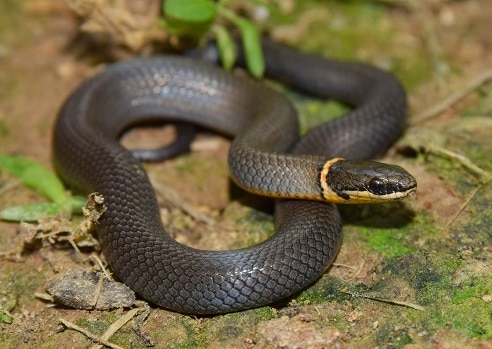
The ring-necked snake is one that every rural American encounters in some regions, easily recognisable by the namesake ring. So many people have stories of their Granddads lifting up a rock and flushing out a whole family, or finding a lost and confused one in their garage. The good news is that this is also a harmless snake. They possess sharp fangs, but they’re too small to pierce human skin. Their saliva contains venom, but this is far too weak to cause damage, even if it could enter the body.
There are no recorded hospitalisations from the ring-necked snake, let alone deaths. They often produce a foul smelling musk when picked up by a curious kid or farmer, but almost never bite – with one exception. Scientists have found that touching the base of a ring-neck’s head triggers a bite almost without fail. They discovered this by accident, as they were trying to grasp the snakes’ heads while measuring them.
The theory is that this evolved against a predator which specifically targets its neck, possibly a larger snake like the eastern coral snake. Either way, the bite is barely as painful as a bee sting.
| 2 | Dozens in a few square metres |
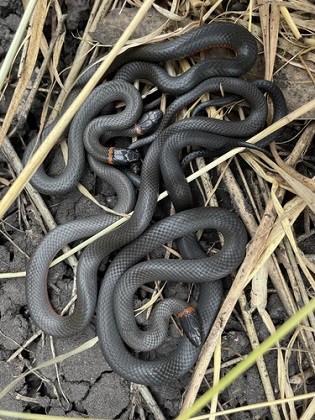
Ring-necked snakes have a huge range, covering the entire eastern seaboard of the US and reaching the west coast in California, while skipping the northwest states like Washington. Across some vast stretches, such as in central Texas and Oklahoma, ring-necked snakes can be uncommon. But in other zones, they can swell to vast colonies and become the single most common reptile, not just snake.
One time, herpetologist Henry Fitch was examining a flat, 4.2 hectare hilltop in eastern Kansas, bordered by rocky cliffs. In just 30 minutes, he managed to discover 279 ring-necked snakes, lurking under sheet metal. Researchers Dundee and Miller had a similar story in 1968, when they discovered 300 ring-necks in a narrow zone in just under 1 hour. This was again in Kansas, this time Douglas County.
Ring-necks are one of the more social species of snake and during winter, dozens will brumate (the snake version of hibernation) together at once. They also share these winter living quarters with other species, including racers and ratsnakes.
| 3 | Pops up in weird places |
Forests are a main habitat of ring-necked snakes, and particularly the moist areas of moderately thick forests. Ditches, ponds and muddy sheet metal are prime areas to spot these snakes. Fields on the outskirts are also hotspots, and they’re particularly fond of cattle fields.
That said, the ring-necked snake can pop up almost anywhere, and that includes the magical walkways of Walt Disney World. In October 2020, a happy tourist bumped into a small black snake right outside Splash Mountain in the Magic Kingdom. Keeping a safe distance, he summoned a cast member who decided that it was a harmless black racer. However, internet dwellers later spotted the signature neck ring and realised that it was actually Diadophis punctatus.
Ring-necked snakes are also a species to appear on “Snake Road” in Shawnee National Forest, Illinois, the only road in the world to be closed for annual snake migrations. The road bisects a cosy swamp to the west and towering limestone cliffs to the east, which are perfect for winter hibernation. These migrations can take up to 2 months. Here they coexist with cottonmouths, the species the road is most famous for.
| 4 | A rare ant-eating snake |
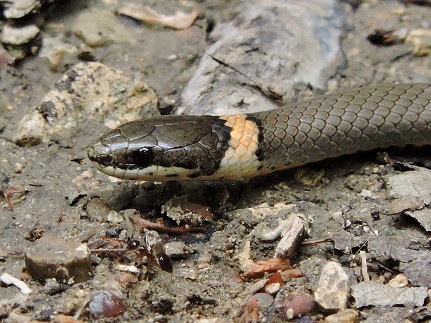
Ring-necked snakes are tiny. Their average length is 25-38cm and the longest subspecies (the regal version) only reaches 46cm. Their bodies are thin, meaning that unlike a puff adder, there’s no extreme thickness to compensate.
Consequently, the ring-necked snake has a diet of worms, slugs, and insects, since they literally can’t fit anything larger in their body. Their diet varies massively by region, as those in Michigan eat the red-backed salamander almost exclusively. This amphibian measures 5-10cm and does indeed have a red back.
In Virginia, a 1939 study found a diet of 80% salamanders, 15% ants, and 5% assorted insects and grubs. Another study examined Big Black Mountain in eastern Kentucky, and again found a salamander-munching bonanza. But in northeast Kansas, Henry Fitch found that ring-necked snakes ate earthworms almost exclusively. In the arid parts of Texas, they’re more reliant on small lizards and even the tiniest snakes. Ring-necked snakes aren’t a fussy eater; the main controllers are size and opportunity.
| 5 | Relations with other snakes |
Nobody can agree on whether there’s a Head Snake on planet Earth. The king cobra is a candidate, or maybe the reticulated python with its longest length. Most likely, it’s a 50 foot basilisk lying undiscovered in roasting hot tunnels just below the Earth’s crust. But one thing guaranteed is that the ring-necked snake is pretty low on the hierarchy.
Being 30cm, it’s regularly eaten by a host of other species. Henry Fitch spent 20 years monitoring ring-necked snakes, and found that the copperhead was its single most common predator (35 times), followed by the eastern racer (15), milk snake (2), and timber rattlesnake (just once). Somehow the copperhead has a particular taste for them, or maybe they bump into each other more.
The one snake which the ring-neck is known to eat is Brahminy’s blind snake, an invasive species from Australia which burrows its way through soils. At 10cm, it’s one of the smallest snakes in the world – some say the second shortest. They look more like small black worms than real snakes.
| 6 | All about the neck ring |
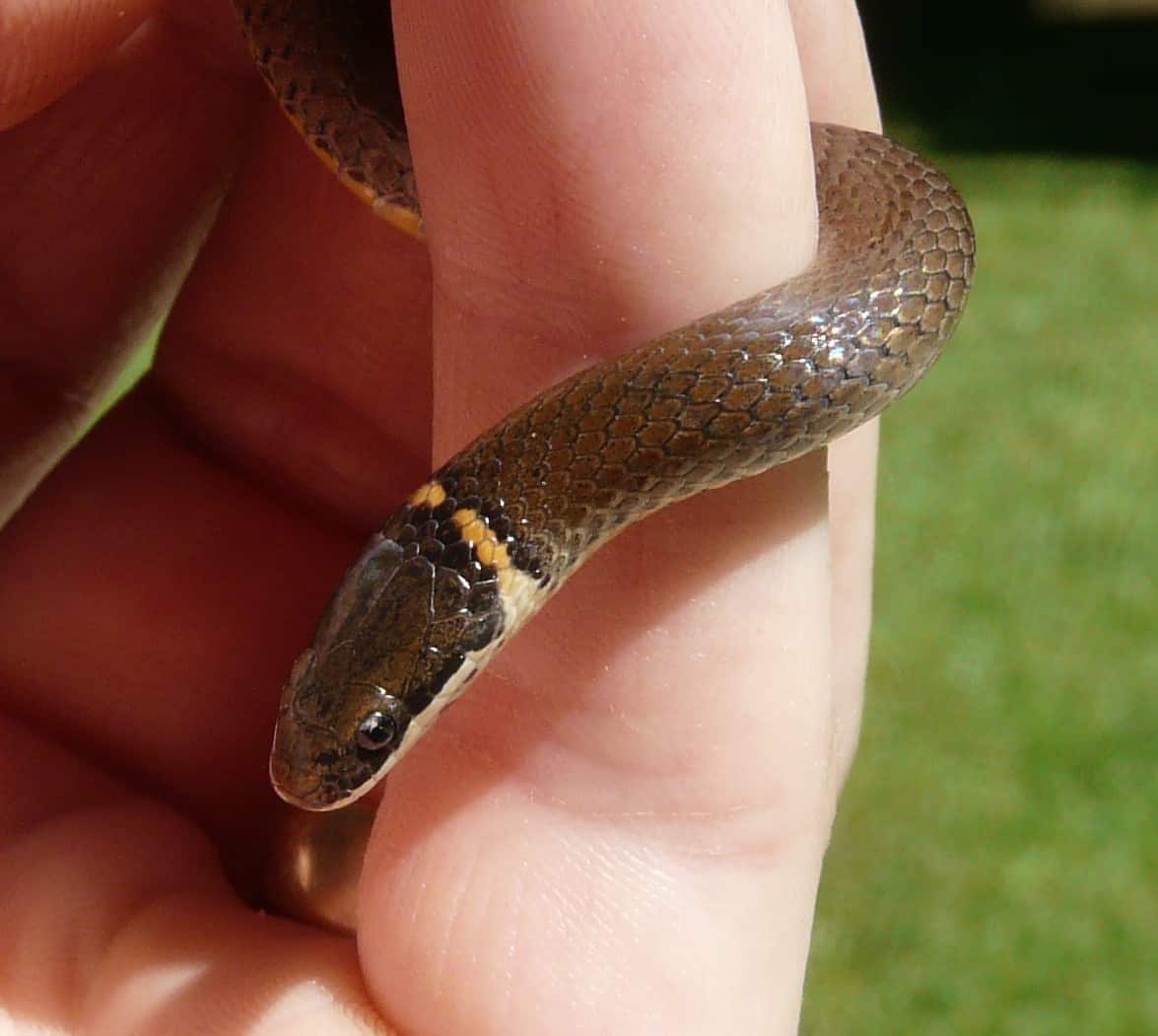
The ring-necked snake has 14 different subspecies under its umbrella. Most of the differences are subtle scale variations, but the signature neck ring is the exception.
In the northern ring-necked snake, which stretches from northern Florida to Ontario, the ring is white/cream coloured and completely unbroken. In the equally common Mississippi ring-necked snake, the ring is much thinner and sometimes broken. The southern ring-neck found in Florida often has gaps in the middle, while the Florida keys version (very rare) has only an extremely faint ring.
The ring is the only distinguishing feature of this species. Its black colouring could easily be mistaken for a mud snake or an eastern racer (as happened at Splash Mountain). Ring-necked snakes have no noticeable patterns, and are either a solid black, dark grey, or very dark blue. Their belly is more interesting, with solid red colour blocks. Watch out for internet pictures such as these: the colours are ultra saturated and make the species look more vibrant than it really is.
| 7 | Vanishes in July and August |
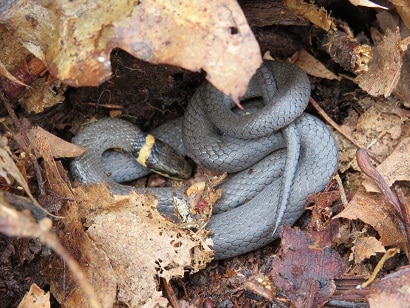
Ring-necked snakes are normally spotted lurking under shelter, like leaf litter, log piles, or warm rocks. But their favourite shelter is sheet metal, which they’re drawn to like a magnet. Whether lying in someone’s back garden or dumped on a country road, ring-necked snakes will spend hours lying motionless below these artificial metallic shelters.
Sheet metal absorbs sunlight particularly well, and ring-necks like to lie with their backs gently touching the metal’s underside, to absorb the heat. On the hottest days, these sheet metal shelters become too warm and the ring-necks flee to avoid roasting. In fact, it’s rare to spot them during summer at all.
Ring-necked snakes are more sensitive to dry weather than average, and will always ensure that a stream or pond is nearby, even if they don’t live in it. Summer is when they vanish underground, invading vole or gopher burrows. Ring-necked snakes aren’t true burrowers, lacking the spade-like noses. Instead, they invade existing burrows and power through the loose soil filling the tunnels.
| 8 | Ant alliances |
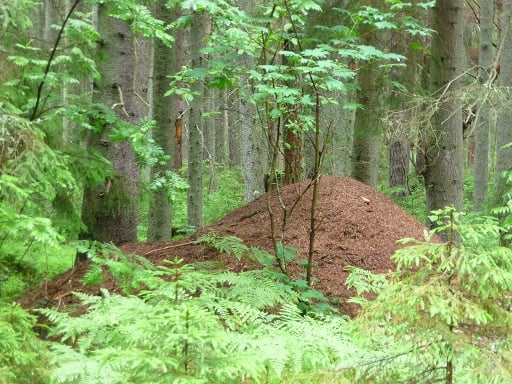
These tunnelling tendencies show up in the ring-necked snake’s physical appearance. Their bodies are long, their heads narrow, and their eyes are beady and small. In the southern US, ring-necked snakes regularly live with swarming civilisations of ants. In 1936, Raymond Ditmars walked around a forest and started pulling the rotting bark from trees. Time and time again, a swarm of ants would burst out, followed by a sleepy ring-necked snake. He even found one ringneck inside an anthill itself.
Whether it’s their dislike of open spaces, or an innate ability to sense danger, ring-necked snakes have an advantage over many species – they tend to avoid roads. It’s much rarer to find them as roadkill compared to corn snakes or smooth green snakes. Ring-necked snakes normally stick to a home range of 70 metres, but when the itch strikes, they’re known to travel 200 feet in a single day, or even up to a mile.
| 9 | Takes hours to immobilise prey |
Ring-necked snakes are a rear-fanged species. Instead of a one and done venom injection through its front fangs, accomplished in a split second where you try to dodge, the ring-neck produces a slow and steady stream through its back teeth, created by a Duvernoy’s gland, which in this species is located directly behind its eye.
There’s no injection function, so the venom must instead soak into a dry fang wound. The ring-neck must chew restlessly to force the venom in, which runs down its back teeth through miniature canals. Many species use this “manual” system, but the difference is how agonisingly slow the ring-neck is.
The red-necked keelback of Thailand can send a human to hospital after 2 minutes of chewing, but the ring-necked snake once chewed its prey for 375 minute before it was immobilised. 40 minutes of chewing is very common. The ringneck snake compensates by having an iron constriction grip, preventing the prey from wriggling free.
| 10 | Capable of outsmarting birds |
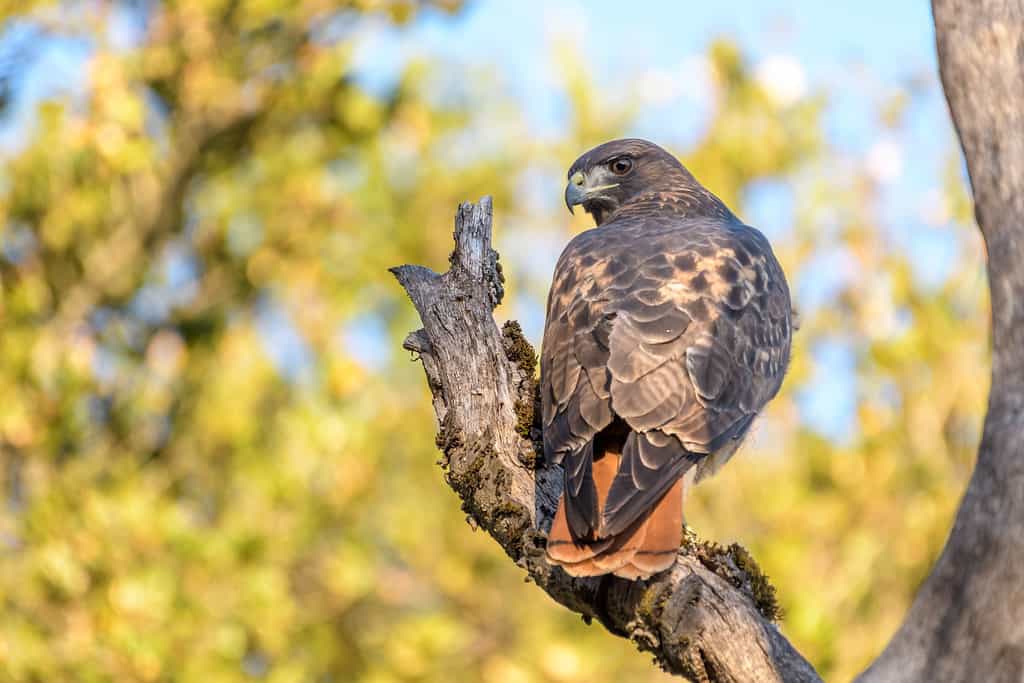
There are many ways to escape a predator in this world. Some snakes might spin 180 degrees and run, some might change colour and blend into a tree, and others might bite back viciously. The ring-necked snake has settled on curling its tail into a corkscrew shape and displaying its bright red colours (known as tail spiralling). Ring-necks are commonly hunted by red-tailed hawks and broad-winged hawks, and these crafty birds aren’t stupid enough to be fooled for long.
But when shown bright colours in a quick flash, colours which could originate from the most venomous of snakes, it’s enough to startle them for a split second and buy the ring-neck the time it needs to slither away. Once inside a dark tunnel or rotting log the snake is out of the bird’s reach. Not all ring-necked snakes use this tactic; those with yellow bellies don’t bother, including the Mississippi subspecies.
Releasing a foul-smelling musky substance is another of their tactics, as is playing dead, as it rolls over on its back and goes completely limp. They commonly hide their head within their coils, to protect the brain. Ring-necked snakes almost never bite predators except when gripped behind the head.
